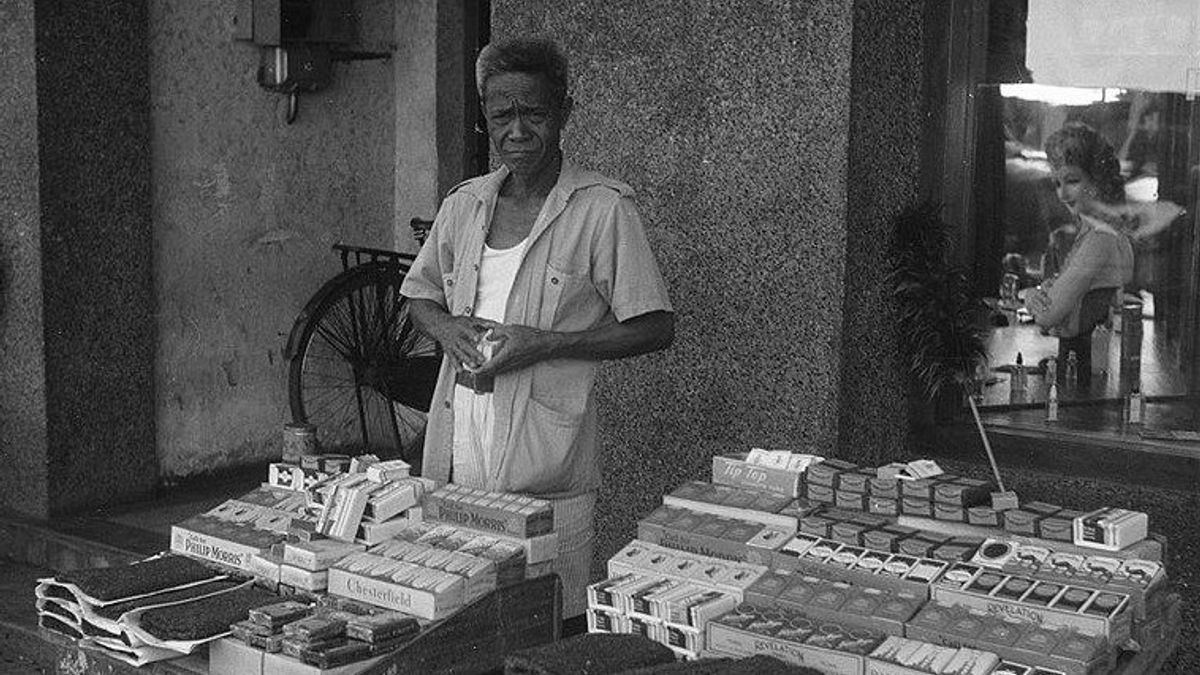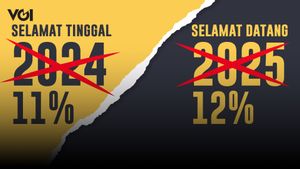JAKARTA - The tradition of smoking cigarettes has a long history in the archipelago. It is noted that cigarettes began to be consumed by the natives long before the arrival of the Dutch. The presence of the legend of Roro Mendut is proof of that. Cigarettes were not wrapped in a stigma at that time. He had become a drug and considered profitable. It can be seen from the ability of the cigarette industry to survive the recession storm of the 1930s. The Dutch considered the cigarette industry as the "savior" of the Dutch East Indies economy.
It is not known for sure when the cigarette culture began to be favored by the bumiputras. However, if you refer to old literature, cigarettes have been widely known since the 1600s. This means that the natives have been familiar with tobacco plants long before Dutch colonialism.
Cigarettes at that time were widely used as medicine, even as a ritual complement. Even so, at that time cigarettes were not an attractive merchandise as they are now, although there were quite a lot of fans, from nobles to commoners.
The phenomenal ruler of Mataram, Sultan Agung (1613-1645) was known as a chain smoker. While the traces of other Bumiputras in consuming cigarettes are present in the records of Nusantara explorers. Another most powerful picture related to the smoking habit of the bumiputras can be traced from the emergence of legends from the era of Sultan Agung. Roro Mendut, for example.
“A romantic story related to smoking during the reign of Sultan Agung is the story of Roro Mendut-Pranacitra. Because he didn't want to be the concubine of the old Tumenggung Wiraguna, Roro Mendut was sentenced to pay taxes of three reals a day."
“To meet such a huge fine, Roro Mendut tried to make cigarettes, so he finally met the young and handsome Pranacitra. A couple fell in love with each other, but in the end Pranacitra was killed by Wiraguna, and Roro Mendut committed suicide,” said JA Noertjahyo in the book 1000 Years of the Archipelago (2000).

The entry of the Dutch into the archipelago affected the legitimacy of smoking culture in the archipelago. However, the cigarettes favored by the Dutch are not Nusantara-style cigarettes, which are simple with corn husks as the wrapper. The Dutch like smoking with a pipe.
The hobby was because the smoking habit among the Dutch soldiers could prevent them from various tropical diseases. Since then, the Dutch have believed that cigarettes are like a panacea. The belief in cigarettes as medicine is also held by the bumiputras, whose origins came from an bumiputra named Haji Djamari.
He is known as a pioneer who pioneered the creation of kretek cigarettes around the end of the 19th century. Clove cigarettes were accidentally discovered by Haji Djamari by adding cloves to his cigarette blend. Unexpectedly the concoction of cigarettes can reduce pain in the chest of Haji Djamari who was previously sick.
“Thus alcohol's antidote to disease is clearly evident! Another prevention is smoking. It was a golden age when good Dutch cigars sold for three thousand dollars, and even Havana cigars cost only ten dollars per thousand. But the Batavians prefer pipe cigarettes to cigars.”
“They smoked pipes when attending funerals and when they rode horses in parades as the proud guards of the city of Batavia, and of course they smoked pipes while sitting at night in front of their respective homes enjoying the 'fresh' air of the canal,” Bernard HM. Vlekke in the book Nusantara (2018).
Saving the Dutch East Indies from recessionGradually cigarettes began to seize the market as a popular merchandise. The emergence of the Agrarische Wet (Agrarian Law) 1870 to ethical politics (1901-1942) became the origin. The Dutch East Indies then became a famous exporter of agricultural commodities and raw materials. Tobacco is one of its products.
The presence of the law made a series of cigarette entrepreneurs (the Netherlands, China, and bumiputra) come to the fore. They tried to fight in the Dutch East Indies cigarette industry. However, the competition had decreased when the storm of global economic recession hit the Dutch East Indies in the 1930s.
The impact was felt not only by the big players in the cigarette industry – from white cigarettes to kretek, but also by the Dutch colonial government. A number of important sectors that became the prima donna of the Dutch "fat account" were reduced. Hundreds of thousands of workers became unemployed. This condition is even present in almost all corners of the country.
“The momentum is what history has called: the Economic Depression of 1930, when the prices of world plantation products fell sharply on the international market. Many of them had to close their businesses or were declared bankrupt by the government.”
“Hundreds of thousands of workers in this sector have lost their jobs and livelihoods. They must return to the village to build their own destiny with the potential that exists in their respective villages as well as the skills and experience they have,” said Sri Margana et al in the book Indonesian Kretek: From Nationalism to Cultural Heritage (2014).
The economic recession, which is remembered as the malaise, also hit the cigarette industry. Cigarette entrepreneurs rack their brains to find solutions. Some reduce the quality of cloves, tobacco, and employees.

All of this is done as a form of tactics to keep it alive. Even though the quality of the cigarettes has decreased, the products are still favored by all consumers. This fact makes the cigarette industry the most resilient sector in facing a recession. The cigarette industry is the fastest growing when hit by a recession.
The Netherlands did not remain silent. Colonizers began to smell further than the economic value offered by the cigarette industry. For the Netherlands, the cigarette industry is immediately cult as a savior. Moreover, in Kudus, Central Java, 165 cigarette factories have been established, including the Bal Tiga cigarette factory which is owned by the “King of Kretek” Nitisemito.
After that, the Dutch colonial government made the cigarette industry the main tax target to cover losses suffered during the recession. The main factor that the Dutch looked at was the number of Indonesian cigarettes produced.
Both kretek and white cigarettes were promising in 1931. White cigarettes reached Rp. 7 million per year. Meanwhile, kretek cigarettes reached Rp. 6 million per year. The difference in numbers is proof that the competition between white cigarettes and kretek has been rooted since under the banner of the Dutch colonial government.
"The Dutch colonial government took a stand, because since 1925 in Cirebon a joint venture between Britain and the United States had built a BAT (British-American Tobacco) white cigarette factory in Cirebon, also in 1928 built a factory in Surabaya."
"The Netherlands also took a stand and differentiated the excise duty on white and original cigarettes, by issuing Staadsblad No 427 of 1935 - regulating the minimum retail price of white cigarettes so as not to pressure small people's industries," concluded Rudy Badil in the foreword to the book Javanese Kretek: Lifestyle. Cross Culture (2011).
*Read other information about the Dutch colonial period or read other interesting articles from Detha Arya Tifada.
Other MEMORIESThe English, Chinese, Japanese, Arabic, and French versions are automatically generated by the AI. So there may still be inaccuracies in translating, please always see Indonesian as our main language. (system supported by DigitalSiber.id)










